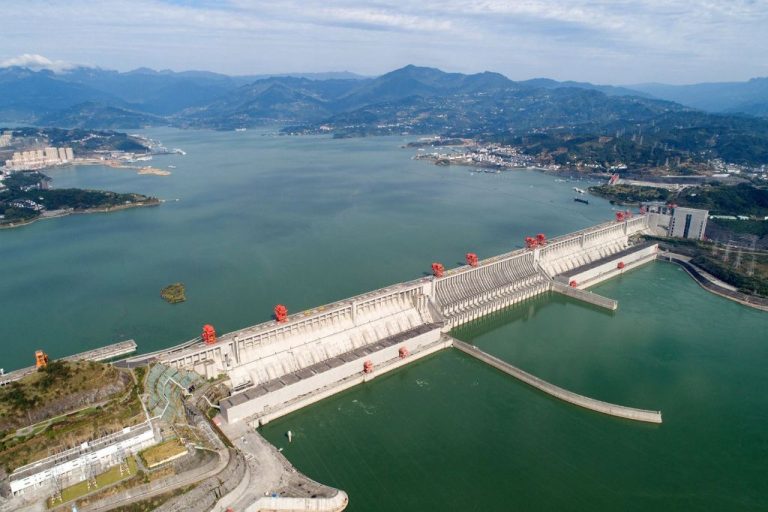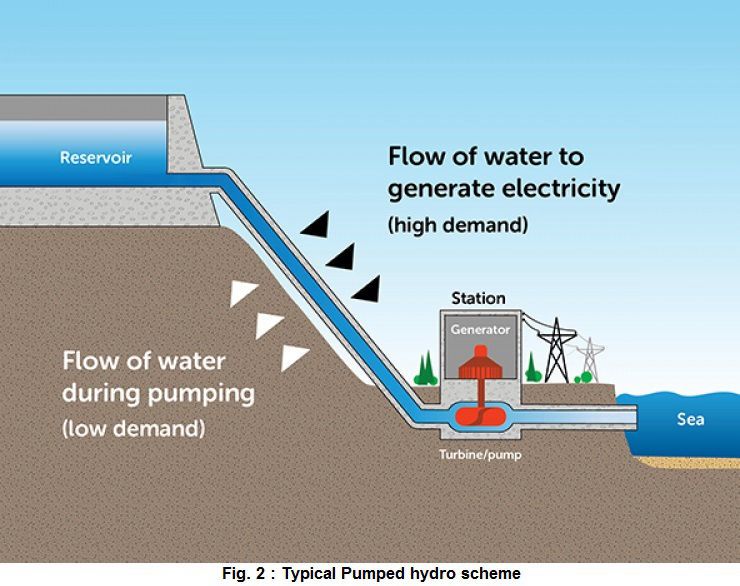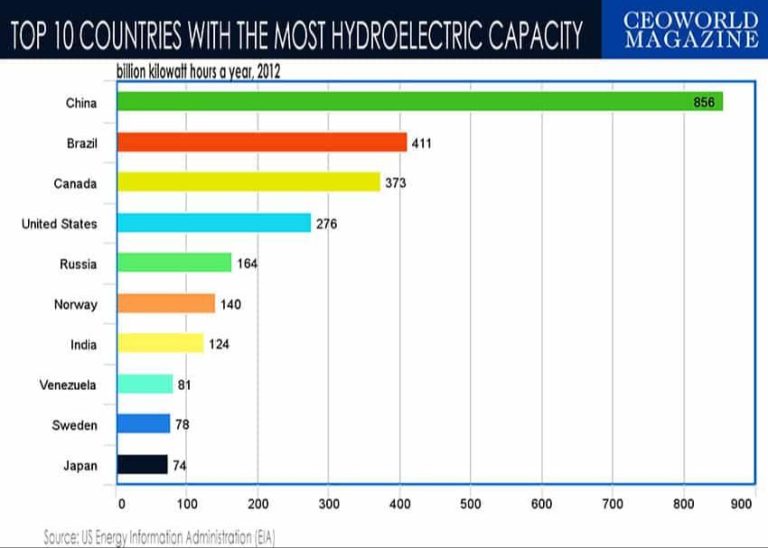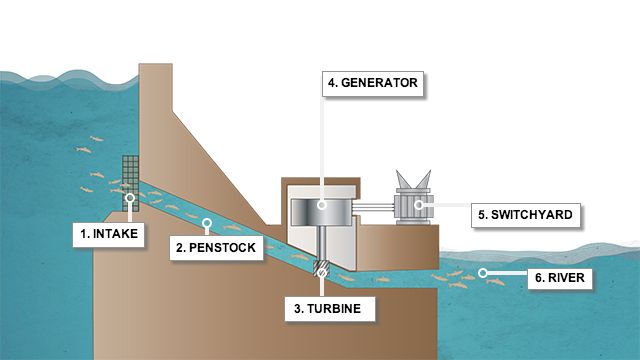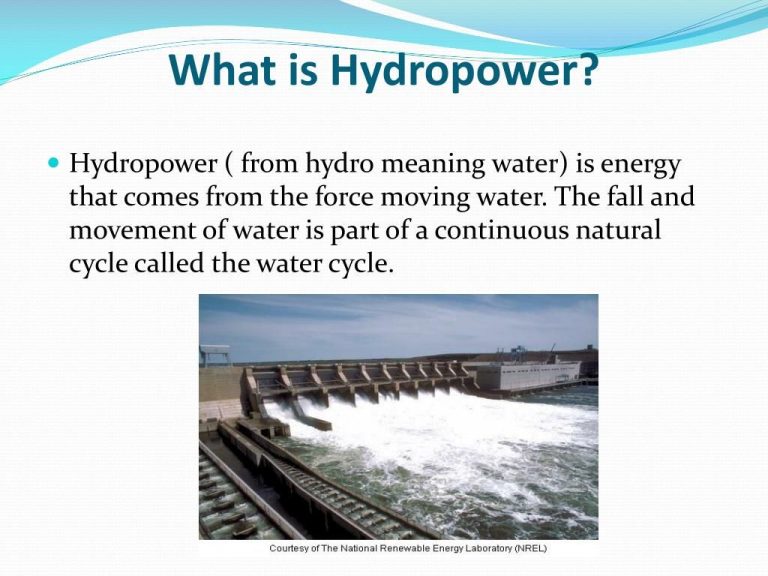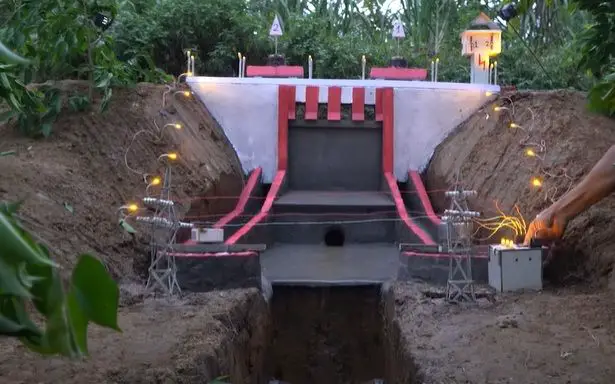How Efficient Is Pumped Storage Hydropower?
Pumped storage hydropower (PSH) is a type of hydroelectric energy storage used by electric power systems for load balancing. It involves pumping water from a lower elevation reservoir to a higher elevation reservoir when electricity demand is low, typically during nighttime hours. The water is then released back down to the lower reservoir through turbines to generate electricity when demand is high, such as during peak daytime hours.
In essence, PSH allows excess electricity generated during periods of low demand to be stored as potential energy in the form of water in an elevated reservoir. This stored energy can then be utilized later to meet higher electricity demands. The upper reservoir acts as a battery, storing power and ensuring a stable electricity supply despite fluctuations in usage throughout the day.
Efficiency Compared to Conventional Hydropower
Pumped storage hydropower is generally 80-85% efficient compared to around 90% for conventional hydropower. This lower efficiency for pumped storage comes from electrical transmission losses as well as water evaporation and leakage. However, the ability to store energy and generate electricity on demand still makes pumped storage an attractive asset for supporting renewable energy and grid reliability.
The process of pumping water uphill to a reservoir requires electric energy, with some losses occurring during this process. Then when the water flows back downhill to generate electricity, there are further minor losses through the turbines and generators. Therefore, the output energy is lower than the initial input. Conventional hydropower has higher efficiency as it utilizes the natural flow of rivers without an energy-intensive pumping cycle.
However, pumped storage efficiency is comparable or superior to most other energy storage technologies. It also benefits from using reversible pump/turbines along with reservoirs that have already been constructed and provide natural storage. With continued innovation and technology improvements, pumped storage efficiency is likely to increase in the future.
Advantages for Grid Reliability
One of the major advantages of pumped storage hydropower is its ability to act as a battery for the electrical grid. With an increasing amount of intermittent renewable energy like solar and wind coming online, grid operators face challenges in matching supply with demand. Solar only generates power when the sun is shining and wind power fluctuates based on weather conditions. This volatility can destabilize the grid if supply suddenly drops while demand remains high.
Pumped storage allows grid operators to store excess renewable energy during times of oversupply. For example, solar panels may produce more power midday than the grid can use. This excess electricity can be used to pump water uphill into an upper reservoir. When renewable supply drops off in the evening but demand is still high, the stored water can be released downhill to spin a turbine and generate electricity. This makes the grid more stable and reliable by balancing supply and demand.
Pumped storage provides a large-scale way to store renewable energy that would otherwise be curtailed. By acting as a giant battery, it helps integrate more renewables onto the grid. This leads to reduced carbon emissions and a more resilient electrical infrastructure.
Roundtrip Efficiency Factors
The roundtrip efficiency of pumped storage hydropower refers to the ratio of electricity generated compared to the amount of electricity used for pumping. There are several factors that affect the roundtrip efficiency:
Height Difference
The height difference between the upper and lower reservoirs is a major determinant of efficiency. A greater height difference allows more potential energy to be captured when water flows from the upper to the lower reservoir. Modern facilities with height differences of over 600 meters can achieve roundtrip efficiencies of 80% or more.
Turbine and Pump Efficiency
The efficiency of the turbine used for generating electricity and the pump used for pumping water uphill also impact overall efficiency. More advanced turbine and pump designs can achieve efficiencies of 90% or higher. Variable speed pumps that can modulate based on electricity prices further improve roundtrip efficiency.
Transmission Losses
Transmitting electricity over long distances leads to some energy losses. Building pumped storage closer to electricity demand centers reduces transmission losses and improves roundtrip efficiency. Underground transmission lines also have lower losses compared to overhead lines.
New Technology Improvements
Pumped storage hydropower technology has continued to advance in recent years, enabling greater efficiency through innovations like variable speed pumps and turbines and the use of advanced materials. Variable speed systems can adjust pumping and generating speed to match load and resource conditions. This allows the units to operate in a wider range of modes compared to conventional fixed-speed technology. Variable speed systems require complex power electronics to convert frequency, but the improved performance often offsets the higher costs.
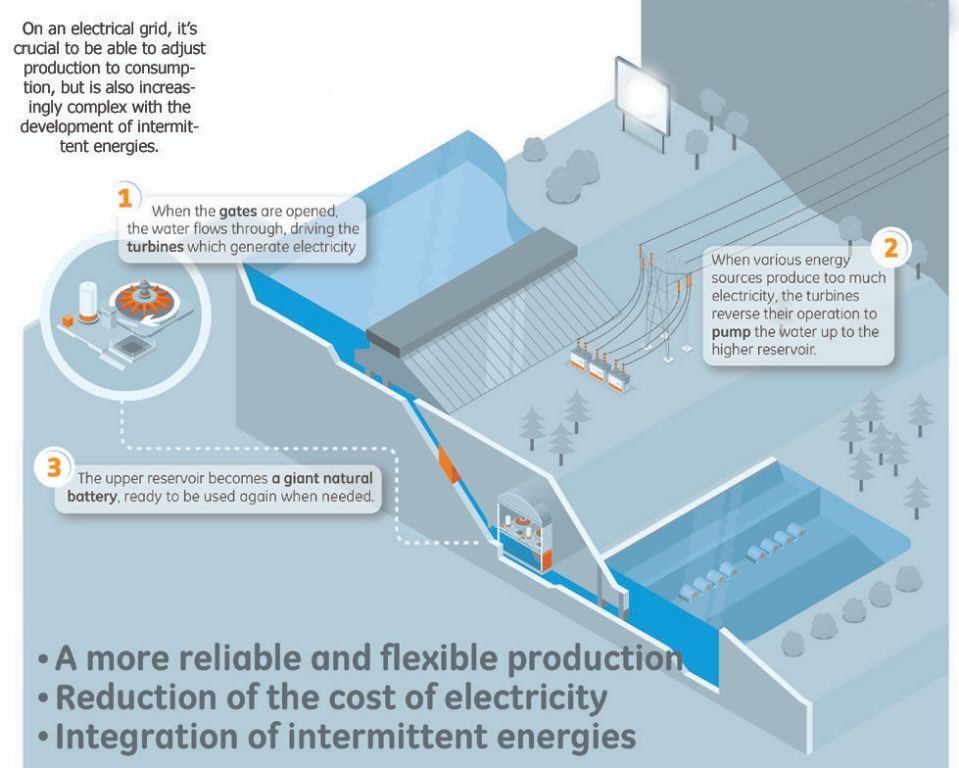
Advanced materials like carbon fiber composites and high-strength steel alloys allow for larger power densities and greater reliability. New designs can increase the height between upper and lower reservoirs for increased storage potential. Hydro turbines are also evolving to maximize efficiency across a wider range of flow conditions. With further improvements, pumped storage can become even more effective at grid integration, flexibility, and storage capacity.
Role in Renewable Energy Growth
Pumped hydro provides crucial flexibility for electricity grids with high levels of variable renewable energy like wind and solar power. Renewable sources like wind and solar generate power intermittently, fluctuating based on weather conditions and daylight hours. This can lead to an excess supply of electricity during periods of high wind and sun.
Pumped hydro offers an effective solution for storing the excess renewable energy that would otherwise be curtailed. When wind and solar produce more power than needed, the excess can be used to pump water uphill into the upper reservoir. This energy can then be released on demand by letting water flow downhill to generate electricity in the turbine. So pumped hydro serves as a giant battery, absorbing extra renewable energy when supply exceeds demand and discharging electricity when needed.
By storing excess renewable generation, pumped hydro enables much greater grid penetration of intermittent wind and solar power. The storage helps shift renewable energy from times of excess to times of high demand when the value of the electricity is greater. This allows the grid to rely more heavily on renewable sources.
Geographic Limitations
While pumped storage hydropower can provide valuable grid services, it does have some geographic limitations. Pumped storage requires very specific terrain and geological formations to utilize upper and lower reservoirs. The upper reservoir must be located well above the lower to allow for sufficient water pressure and head when generating electricity. This restricts potential sites to mountainous regions or locations that support construction of an upper reservoir on a plateau. In flatter terrain, pumping water uphill is not feasible.
Building the infrastructure also requires flooding land near rivers or valleys to create the lower reservoir. And constructing an upper reservoir can impact natural habitats and land use on mountaintops. The locations best suited for pumped storage hydropower are limited globally. For regions without access to high elevations and suitable water sources, it is likely not a viable option. Countries like Switzerland and Austria with ample mountains have robust pumped storage capacity, while flatter regions struggle to find suitable geography. Overall, pumped storage can provide grid benefits but its potential is restricted based on terrain and impacts on land and water use.
Cost Effectiveness
Pumped storage hydropower requires high upfront capital costs, as building the upper and lower reservoirs and pump/turbines is expensive. However, over the long term, pumped storage can provide significant value and cost savings for grid stability.
The high initial investment is offset over decades of operation. While a gas peaker plant may seem cheaper upfront, it has higher operating costs for fuel and maintenance. Pumped hydro’s “fuel” is free once built. Capital costs are estimated at around $2,000 per kW, which is higher than gas or batteries. But lifetime costs even out due to pumped hydro’s longevity and low maintenance needs.
Pumped storage provides essential grid reliability services, avoiding blackouts and power failures which have huge economic costs. It reduces the need for extra generation capacity. The long-term value outweighs initial capital costs. Utilities use detailed modeling to justify the investment for future grid benefits and cost savings.
Examples Around the World
Pumped storage hydropower facilities exist around the world, with major projects found in Europe, China, Japan, and the United States.
Europe has over 40 pumped storage plants, with the largest being the Grand’Maison Dam in Switzerland with capacity of 1,800 MW. Other major European facilities are found in Austria, Germany, Spain, and Italy.
China has invested heavily in pumped storage in recent years and now has over 25 large-scale projects in operation. The largest is the Tianhuangping Pumped Storage Power Station with capacity of 2,400 MW.
Japan was an early pioneer in pumped storage technology and has over 20 facilities. These include large projects like the Okutadami Pumped Storage Power Station at 1,932 MW.
In the United States, pumped storage provides about 95% of utility-scale energy storage and there are over 40 facilities located mostly in California and the East Coast. The Bath County Pumped Storage Station in Virginia is one of the largest in the world with 3,003 MW capacity.
Future Outlook
The future looks bright for pumped storage hydropower as an integral part of the transition to renewable energy. As solar and wind gain larger shares of electricity generation, the need for energy storage to balance their intermittent output will continue growing. Pumped storage offers a proven, cost-effective solution at the large scale required. With most growth expected in developing countries, pumped storage provides a flexible way to expand capacity using hybrid renewable systems. Even developed countries have significant potential for growth by upgrading existing reservoirs or repurposing abandoned mines. Continued technology improvements will also boost efficiency and flexibility. Pumped storage hydropower is poised to play a vital role in replacing fossil fuels and enabling high renewable energy grids over the coming decades.

